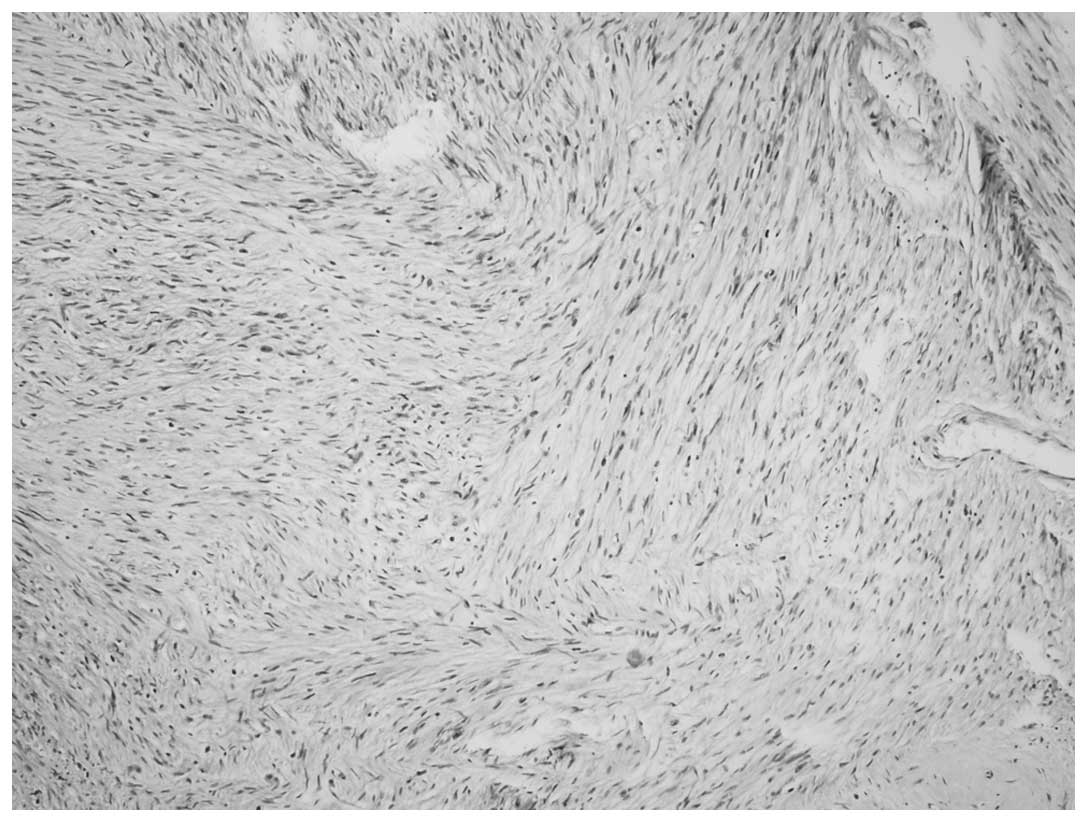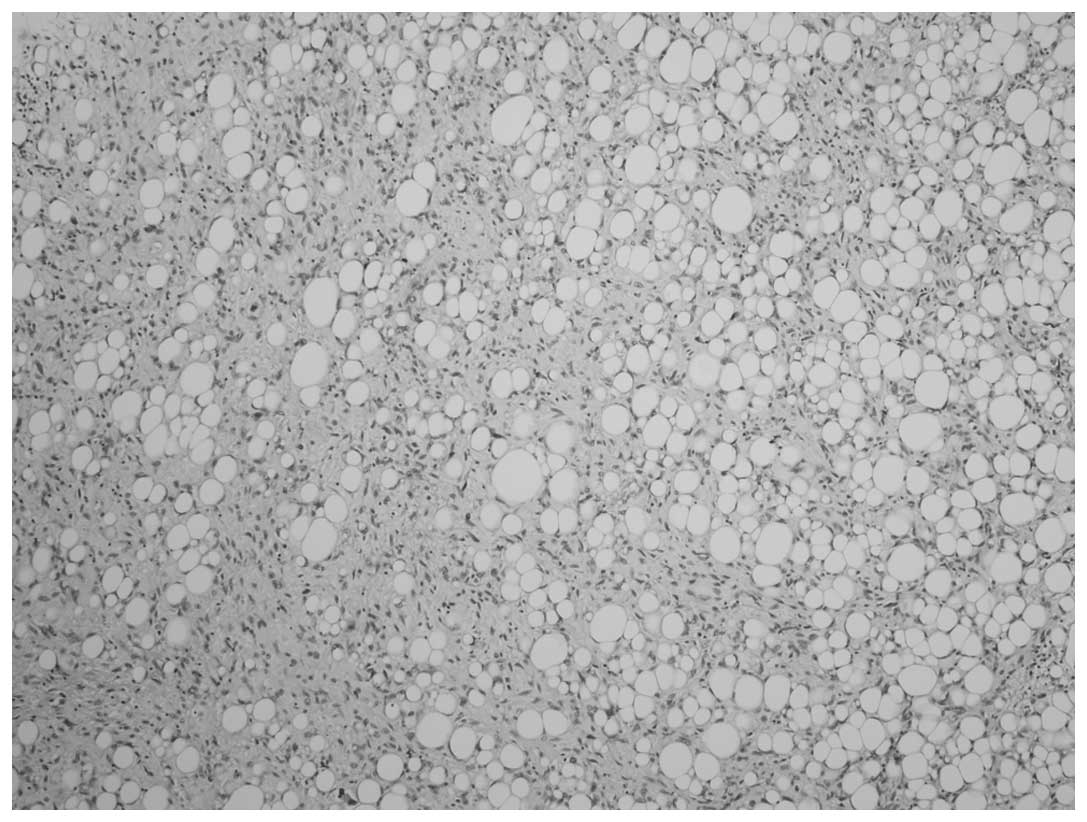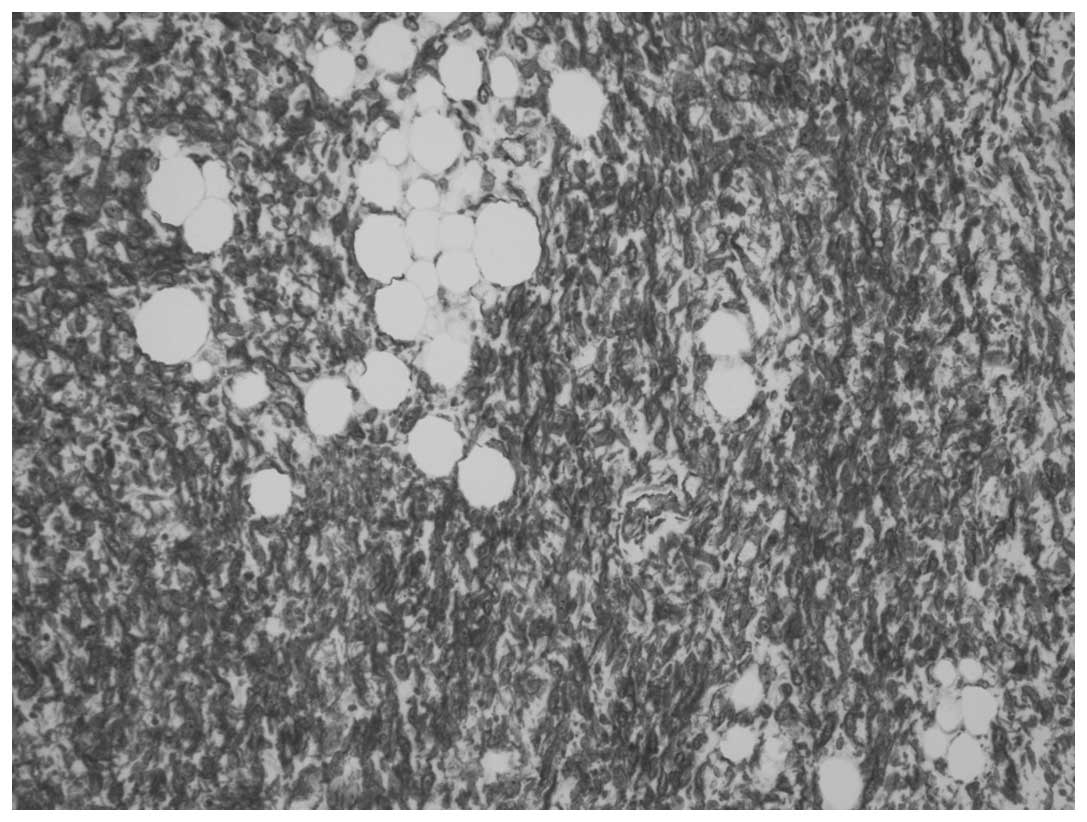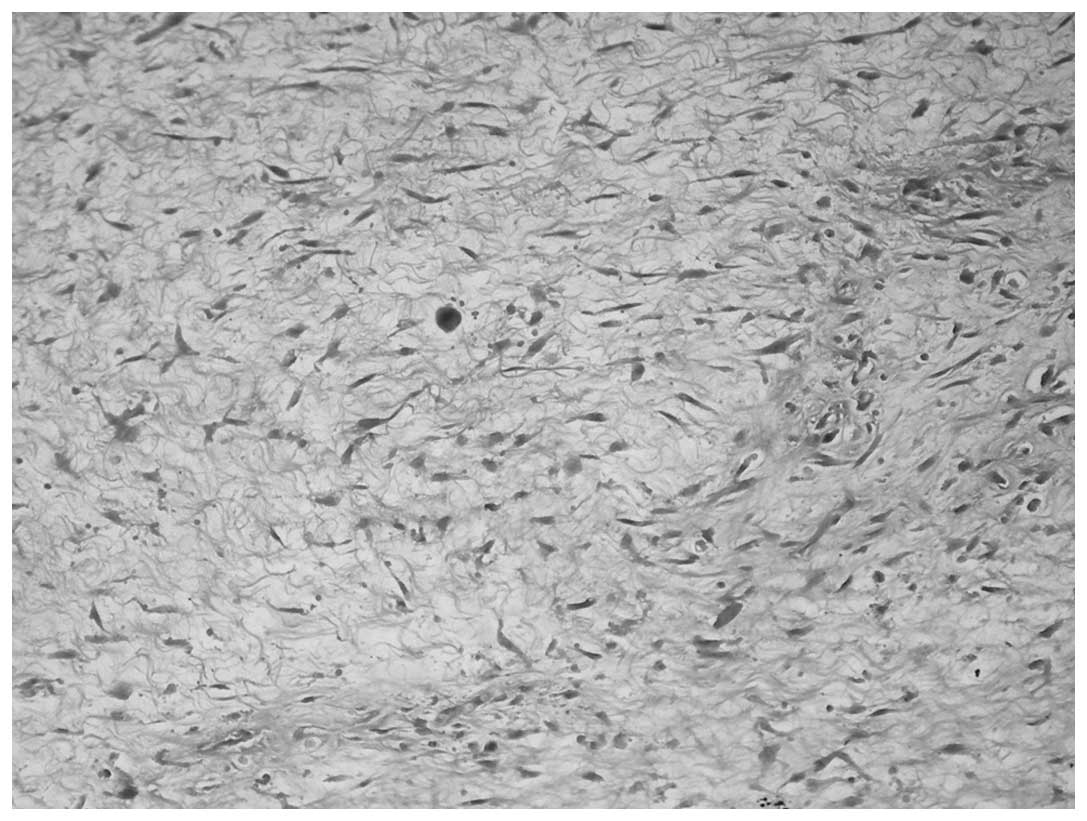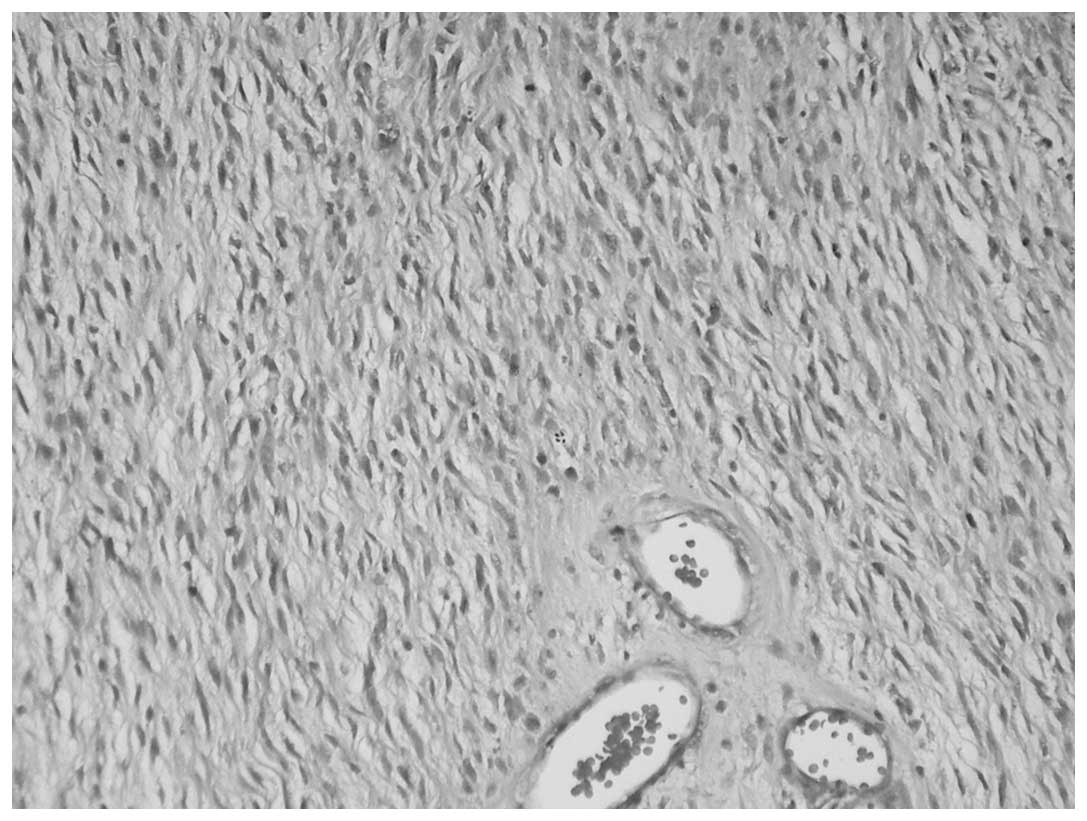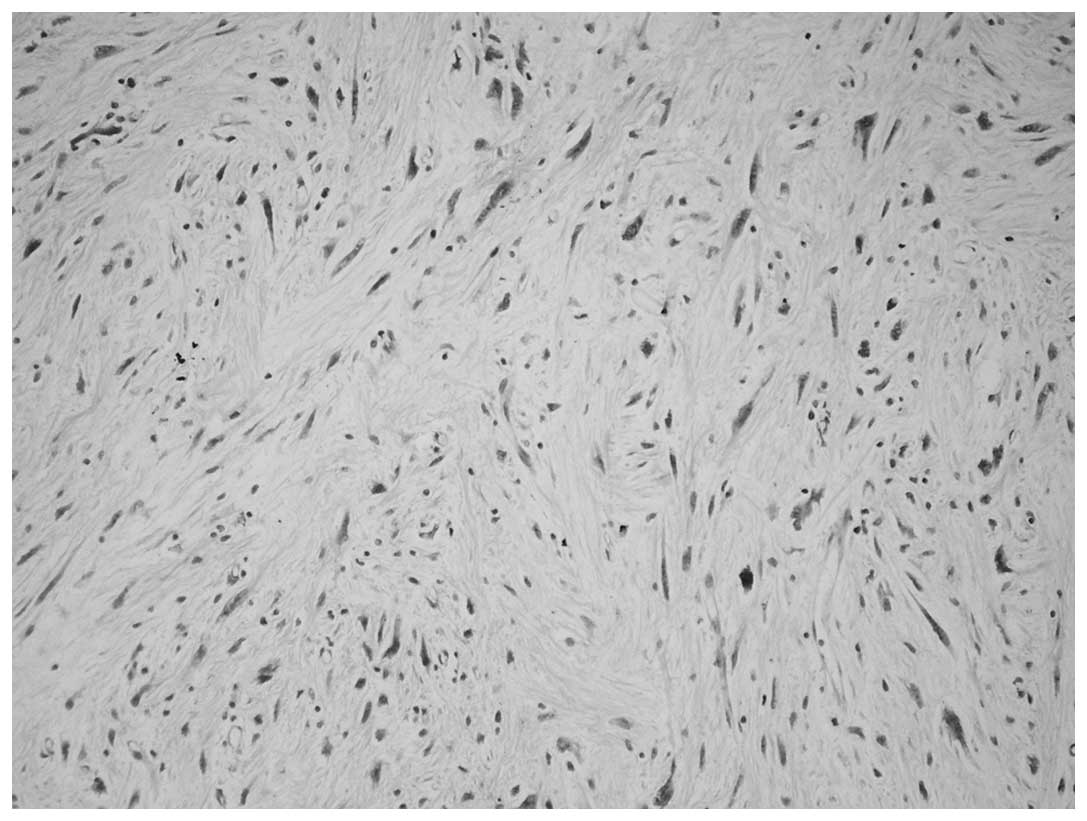Paratesticular sarcomas: A report of seven cases
- Authors:
- Published online on: October 23, 2014 https://doi.org/10.3892/ol.2014.2629
- Pages: 308-312
Metrics: Total
Views: 0 (Spandidos Publications: | PMC Statistics: )
Total PDF Downloads: 0 (Spandidos Publications: | PMC Statistics: )
Abstract
Primary tumors of the paratesticular region are rare, with paratesticular sarcomas constituting a major proportion of these tumors, particularly in the elderly. The paratesticular region consists of mesothelial, various epithelial and mesenchymal cells and may therefore give rise to a number of tumors with various behaviors. Defining the association between the paratesticular mass and the testicle, and differentiation between benign and malignant masses using radiology is challenging, therefore the mass is usually considered to be malignant and radical orchiectomy with high ligation is performed. The present study reports the cases of seven patients with tumors of the paratesticular region and presents the clinical and significant histological features of the tumors. In total, two patients suffered from dedifferentiated liposarcoma (DDLS), two exhibited leiomyosarcoma, two exhibited low‑grade fibromyxoid sarcoma and one case of undifferentiated pleomorphic sarcoma was identified. Radical orchiectomy with high ligation was performed in five cases; simple orchiectomy was performed in one case and excisional biopsy was performed in the remaining case. A leiomyosarcomatous and epithelial membrane antigen (EMA) positive whorl pattern was observed during microscopy in the two DDLS cases. Additionally, one of the low‑grade fibromyxoid sarcoma patients exhibited pleomorphism and mitosis in focal areas. To the best of our knowledge, the present study is the second time low‑grade fibromyxoid sarcoma cases with paratesticular localization have been reported in the literature. Of the seven cases, four patients succumbed to the disease, one patient is living with the disorder and the two cases of DDLS are living without the disease. Paratesticular sarcomas are often aggressive and a multidisciplinary approach is required for the diagnosis and treatment of these tumors.



